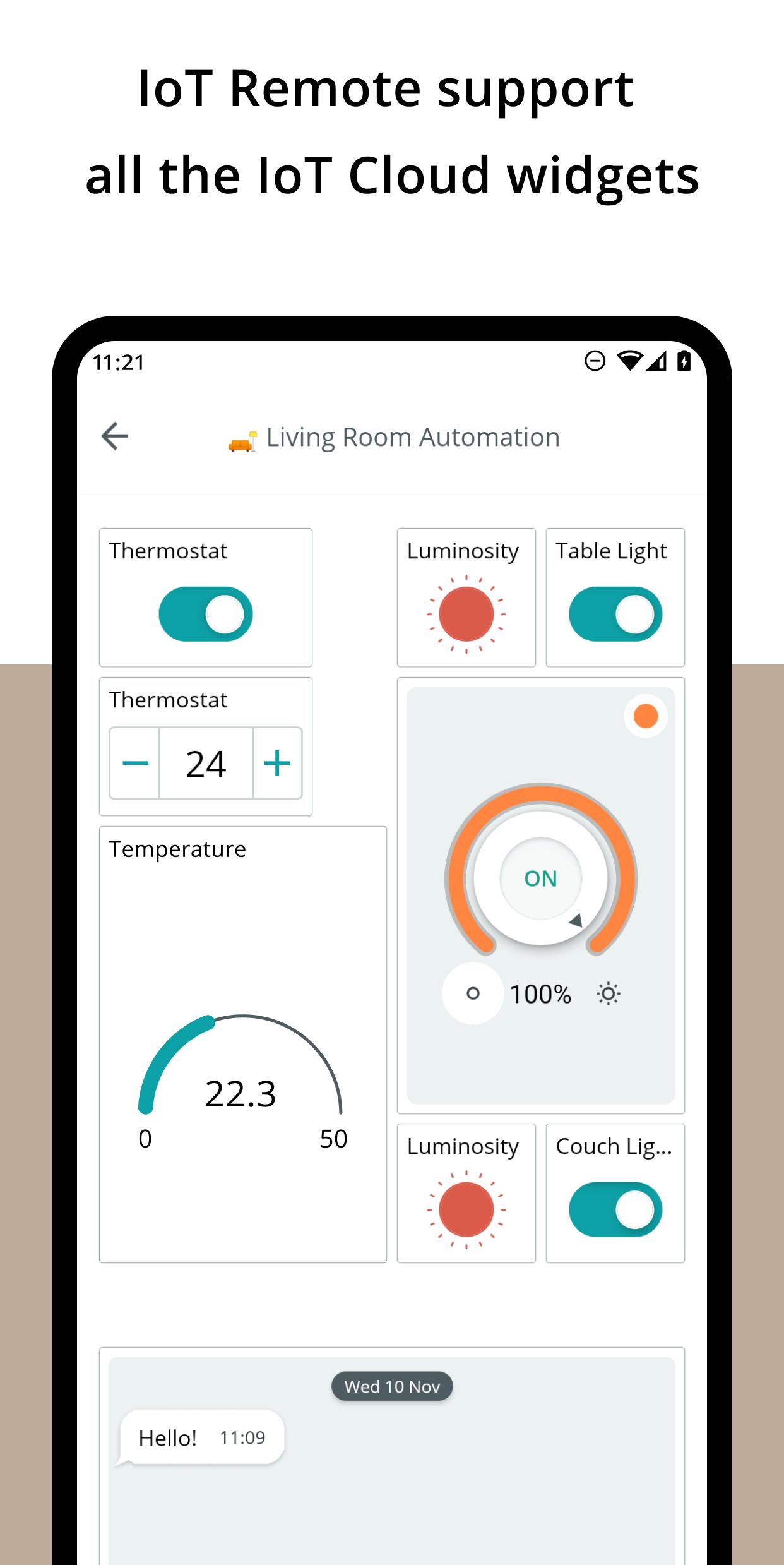SSH Remote IoT Device Android APK: Your Ultimate Guide
Are you ready to take control of your smart home or IoT devices from anywhere in the world, all with the device in your pocket? The SSH remote IoT device Android APK is not just a tool, it's your gateway to effortless remote management, transforming your smartphone into a command center.
The allure of the Internet of Things (IoT) lies in its promise of interconnected convenience. Imagine a world where your home adapts to your needs, your appliances anticipate your desires, and your environment responds to your commands, all orchestrated remotely. This vision, once confined to the realm of science fiction, is rapidly becoming a tangible reality. However, the true power of IoT is unleashed when you can manage these devices from afar and that's where the SSH remote IoT device Android APK steps in.
At its core, an SSH remote IoT device Android APK is essentially an application that allows you to establish secure shell connections with your IoT devices using your Android smartphone or tablet. This seemingly simple functionality unlocks a world of possibilities, from monitoring your smart home security system while you're on vacation to troubleshooting a malfunctioning industrial sensor from the comfort of your office. The magic lies in the Secure Shell (SSH) protocol, a cryptographic network protocol that ensures a secure communication channel, safeguarding your data and commands from prying eyes. SSH encrypts the communication between your Android device and your IoT devices, making it virtually impossible for unauthorized individuals to intercept or tamper with your commands.
- Movie News Reviews Bollywood Tollywood More Find On Justwatch
- Where To Watch Stream Movies Your Ultimate Guide 2024
To fully grasp the potential of this technology, consider the following scenario: You're miles away from home, yet you receive an alert from your smart security system indicating a potential breach. With the right SSH application on your Android device, you can instantly connect to your home's security hub, review security camera feeds, and even remotely lock doors or sound alarms, all within seconds. The ability to proactively address such situations, regardless of your physical location, is a testament to the power of remote IoT management.
The benefits extend far beyond the home environment. In the industrial sector, SSH remote IoT device Android APKs empower technicians and engineers to remotely diagnose and resolve issues with machinery, sensors, and other equipment. This eliminates the need for costly on-site visits, reduces downtime, and enhances operational efficiency. Furthermore, developers and IT professionals leverage this technology to remotely manage servers, debug applications, and deploy software updates to IoT devices, streamlining their workflow and accelerating innovation.
Choosing the right SSH client app is crucial for a seamless experience. Several excellent free options are available in the Google Play Store, each with its strengths and weaknesses. Popular choices include Termius, JuiceSSH, and ConnectBot. These applications offer a user-friendly interface, robust security features, and a range of functionalities to meet the diverse needs of users. When selecting an app, consider factors such as ease of use, security protocols supported, feature set, and community support. Termius, for example, is praised for its intuitive design and cross-platform compatibility, making it a favorite among both novice and experienced users. JuiceSSH provides a comprehensive suite of features, including SSH key support and advanced terminal emulation. ConnectBot, a long-standing favorite, offers a simple and reliable solution for basic SSH connections.
- Find Movies More Latest Updates Reviews Movierulz Streaming
- Movierulz Updates Latest Telugu Movies More Dont Miss Out
Installing an SSH APK on your Android device is a straightforward process. First, you must open the Google Play Store on your device. Then, simply search for the SSH app of your choice (e.g., Termius SSH client). After you've found your app, tap the install button. The app will download and install on your device in a matter of seconds. Once installed, the application will guide you through the process of setting up a secure connection to your IoT devices. The key to this process is ensuring that your IoT devices are properly configured for SSH access. This typically involves enabling SSH on the device, assigning a secure username and password or setting up SSH keys, and ensuring that the device is accessible via the internet.
Setting up SSH on your IoT device varies depending on the specific device and operating system. Generally, the process involves enabling SSH in the device's settings, configuring a secure username and password, and ensuring that the device is accessible over the internet. For devices running Linux-based operating systems, such as Raspberry Pi, the process is relatively straightforward. You can typically install an SSH server package (e.g., OpenSSH) and configure it through the command line. For other devices, the process may involve using the device's web interface or dedicated configuration app. Regardless of the method, the primary goal is to establish a secure and accessible communication channel.
Once the SSH connection is established, you can then leverage the capabilities of the Android APK to manage your devices remotely. This includes executing commands, transferring files, monitoring system logs, and configuring various device settings. The specific commands and functionalities available will depend on the capabilities of your IoT device and the SSH server you've installed. However, the core principle remains the same: you have complete control over your devices from the palm of your hand.
In addition to the above-mentioned free apps, several other SSH client applications are available in the Google Play Store. However, it's essential to conduct thorough research and read user reviews before downloading and installing any application, as the security and functionality of these apps may vary. When selecting an SSH client app, make sure the application has encryption capabilities and supports security protocols such as SSH key authentication. These measures safeguard the information transmitted between your Android device and your IoT devices from unauthorized access.
To ensure a secure SSH connection, it is vital to implement several best practices. Always use strong, unique passwords for your IoT devices and your SSH accounts. Enable two-factor authentication whenever possible, which adds an extra layer of security by requiring a verification code in addition to your password. Regularly update your SSH client and the firmware of your IoT devices to patch any security vulnerabilities. Furthermore, be aware of your network security. Use a firewall and only allow SSH access from trusted IP addresses. Regularly monitor your SSH logs for suspicious activity, such as failed login attempts or unusual commands. By following these security measures, you can significantly reduce the risk of unauthorized access and protect your devices from cyber threats.
As the world becomes increasingly interconnected, the ability to remotely manage IoT devices will only grow in importance. The SSH remote IoT device Android APK is at the forefront of this evolution, offering a powerful and convenient solution for controlling your smart gadgets from anywhere in the world. Whether you're a tech enthusiast, a developer, or an IT professional, mastering this technology is an investment in your future.
The common use cases for SSH remote IoT devices are widespread and varied. From controlling smart home devices to managing industrial equipment, the applications of this technology are constantly expanding. In smart homes, SSH allows users to remotely manage lighting, security systems, and other connected appliances. In industrial settings, SSH provides remote access to machinery, sensors, and other critical equipment. In the healthcare sector, SSH facilitates the remote monitoring of medical devices and patient data. The versatility of SSH makes it an indispensable tool for anyone involved in IoT development or management.
Looking ahead, the future of IoT management is one of increased automation, integration, and security. As the number of connected devices continues to grow, the need for robust and user-friendly remote management tools will become more critical than ever. SSH remote IoT device Android APKs will continue to evolve, incorporating new features, enhanced security protocols, and seamless integration with other platforms. The emergence of artificial intelligence (AI) and machine learning (ML) will further transform IoT management, enabling predictive maintenance, automated troubleshooting, and proactive security measures.
To stay ahead of the curve, it's essential to embrace continuous learning and adaptation. Stay informed about the latest advancements in SSH technology, security best practices, and IoT development trends. Experiment with different SSH client apps, explore the capabilities of various IoT platforms, and implement robust security measures. By investing in your knowledge and skills, you can be at the forefront of the IoT revolution, leveraging the power of remote management to create a smarter, more connected world.
This powerful technology enables seamless remote access to IoT devices through an Android smartphone. This guide will equip you with the knowledge and tools necessary to master SSH remote IoT device access on Android.
By understanding the basics, choosing the right apk, and implementing strong security measures, you can unlock the full potential of this amazing technology.
If you're diving into the world of IoT and looking for ways to remotely control your devices, you've come to the right place. The SSH remote IoT device Android APK is your gateway to secure and efficient management of your smart gadgets.
Article Recommendations
- Mydesinet Exploring Indian Xxx Net Tech Read Now
- Movierulz Updates Latest Telugu Movies More Dont Miss Out



Detail Author:
- Name : Nicolas Schroeder
- Username : pward
- Email : demarco48@schuster.com
- Birthdate : 1991-11-13
- Address : 452 Elise Divide Konopelskihaven, NM 78524-4922
- Phone : 847.687.1569
- Company : Hagenes Inc
- Job : Forester
- Bio : Mollitia consequatur maxime molestiae sit. Quasi dolores sequi a nihil et similique nostrum vel. Quae veniam iusto qui est voluptatum id ea.
Socials
instagram:
- url : https://instagram.com/geovany_emard
- username : geovany_emard
- bio : Eos fugiat in illo qui qui est. Facere sequi expedita illum quia. Cumque error incidunt non et.
- followers : 6581
- following : 556
linkedin:
- url : https://linkedin.com/in/emardg
- username : emardg
- bio : Omnis corrupti tenetur odio.
- followers : 3766
- following : 1793
twitter:
- url : https://twitter.com/geovanyemard
- username : geovanyemard
- bio : Aut rem sint delectus eius. Sed fugiat modi tempora enim veritatis. Id suscipit quas et sit rerum quas.
- followers : 3806
- following : 2904
tiktok:
- url : https://tiktok.com/@geovany.emard
- username : geovany.emard
- bio : Ut culpa dolorem explicabo nihil. Rerum doloribus cum quia.
- followers : 3926
- following : 1607
facebook:
- url : https://facebook.com/emardg
- username : emardg
- bio : Fuga quia placeat sit fugiat. Vitae totam quod voluptatem est cum itaque.
- followers : 2490
- following : 2094